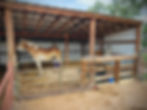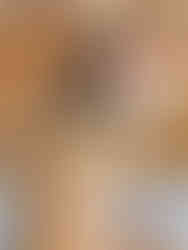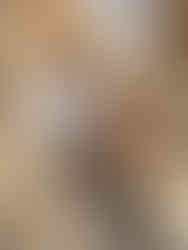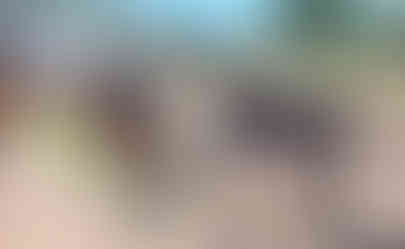Peanut: On-site Rehab post OCD surgery
- Maggie Selzer
- Oct 30, 2022
- 5 min read
Peanut is a 2 year old Belgian who spent a month in on-site full time rehab following bilateral hock OCD surgery. Scroll through this post to learn more about OCD surgery and the rehab process!

Ever heard of OCD lesions before? It stands for Osteochondritis dissecans. According to the American College of Veterinary Medicine:
Osteochondritis dissecans (OCD) is a relatively common condition affecting cartilage and bone in the joints of horses. It causes clinical signs in 5-25% of all cases. OCD is due to a derangement in endochondral ossification (bone formation during fetal development), and considered part of a larger umbrella called Developmental Orthopedic Disease.
Defects can range from mild changes in thickness of the cartilage that coats the bone, to actual fragments of bone that chip off and start floating around in the joint (ouch). Osteochondral defects aren't breed specific--but there is a higher prevalence of this condition in young horses who are still growing. Particularly large horses with big growth spurts. We see the same condition in our human adolescents!
OCD lesions are not more or less common in any specific breeds of horses. But there some predisposing risk factors, according to the ACVS:
Rapid growth and large body size
Nutrition: Diets very high in energy or have an imbalance in trace minerals (low copper diets)
Genetics: Risk of OCD may be partially inherited
Hormonal imbalances: Insulin and thyroid hormones
Trauma and exercise: Trauma (including routine exercise) is often involved in the formation and loosening of the OCD flap
Fun Fact from Peanut's owner:
Peanut was 945 lbs in March of 2022. When he was weighed in July of 2022 for his OCD surgery, he weighed in at 1323lbs! That's a 40% weight increase! He's also grown about 4"
How to treat this condition varies depending on the size and stage of the lesion(s). In Peanut's case, it was suspected that he had loose fragments in at least one hock (the problem often occurs bilaterally and is common in hocks and stifles) so surgery was recommended. When lesions are mild or there aren't loose bodies, often time and avoiding high impact exercise allows a horse to grow out of the problem.

Surgery involves the horse going under general anesthesia and in most cases, having arthroscopic surgery. This involves just a few small incisions so a camera and instruments be used to visualize the entire joint space and remove fragments as necessary. Arthroscopic surgery is preferred over arthrotomy (making a big incision in to the skin and joint) since it causes less trauma to the area and allows for a quicker healing time.

Post operative after care is individualized based on what the surgeon finds and does. But generally speaking, after surgery, horses need:
Stall rest for roughly two weeks followed by modified/graduated turnout
Hand walking
Medication administration (anti inflammatories, pain meds, and often sedation to cope with confinement)
Bandage changes every 3-5 days to keep incisions covered and clean to avoid risk of infection.
The reason for stall rest is an attempt to allow the inflammation and disturbance of the joint to improve as to avoid any further lesions. Horses are usually prescribed a regimen of anti inflammatories, pain medication, and sedatives to manage the confinement.
Stall Rest Rant/Soapbox
Horses are different from humans in the sense that we have the ability to be non-weight bearing on a joint after surgery if we need to and still get around. Horses don't have that luxury. As as result, sometimes stall rest is necessary. HOWEVER, many people are under the impression that there's nothing to do for/with the horse during stall rest. But that couldn't be more false!
Many people are under the impression that there's nothing to do for/with the horse during stall rest. But that couldn't be more false!
Stall rest is a very critical time to start physical rehab in addition to being very proactive and conscientious about your horse's mental and social health! This is true for any horse. But particularly in Peanut's case--he is two years old (hard to believe with how big he is I know) and came off of a 50 acre pasture!
One of the very first things I did with Peanut was use positive reinforcement (R+) to teach him how to target. This involves rewarding Peanut for touching his nose to the target in exchange for low value treats (alfalfa cubes). You'd be surprised, but a lot of horses just love this 'game.' It's good mental stimulation! I also like to use this with rehab horses because:
1) I can use the target to promote active stretching (which you can see in the above photos where Peanut is stretching his neck down and up).
2) I use can use targeting during hand walking for horses that are physically wound up due to being confined. When you can keep a horse's focus and 'retain the brain' you are a lot less likely to end up with a blow up. Some horses love the targeting game so much that the don't even realize they are on a hand walk 😂.
We also made sure to fill his stall with a variety of food puzzles to try and keep him busy. Look at those adorable baby teeth!
The other item we had on the agenda during Peanut's down time was hoofcare/farrier prep. As a two year old, he was still learning the ropes related to standing cooperatively for care. For farrier prep, I like to work together with Zoe Nova of Nova Naturally. It's a bit challenging to handle limbs/feet and be able to reinforce desired behaviors using principles of R+ at the same time. Peanut's greatest room for improvement in the cooperation department was to not snatch his foot away once it was picked up and to keep his front feet forward on the stand for a duration that would allow for some trimming to get done.

He is a very smart and clever guy. The hoof care training sessions gave him some great mental stimulation, helped him to develop an important life skill, and also allowed us to get his feet trimmed!
After two weeks of stall rest and hand walking, Peanut had a re-check appointment where his sutures were removed and he no longer needed hock bandages. He was cleared to begin more movement and exercise. This included additional hand walking, walking over ground poles, backing, lateral work, yielding the forehand and hind quarters, walking hills and over the teeter bridge. And lots of walking around new areas of the property for nibbles of grass and to meet new friends:
Towards the end of his one-month stay, Peanut got some turn out time at liberty in the arena. He mostly was happy to just walk around or follow me, but he did kick up his heels a couple of times.
When OCD lesions are identified early and treated appropriately, most horses have very good outcomes. I expect Peanut will be one of those! He was an absolute pleasure to care for. And it wouldn't have been possible without the support of his dedicated owner and Sunrise Equestrian facilities and staff.
Until next time big guy ❤️

If you are interested in the services I offer, jump over to my services page or feel free to reach out to me directly!
Email: maggie@eponahealing.com
Phone: 970-340-0857
Facebook: www.facebook.com/EponaPT
































